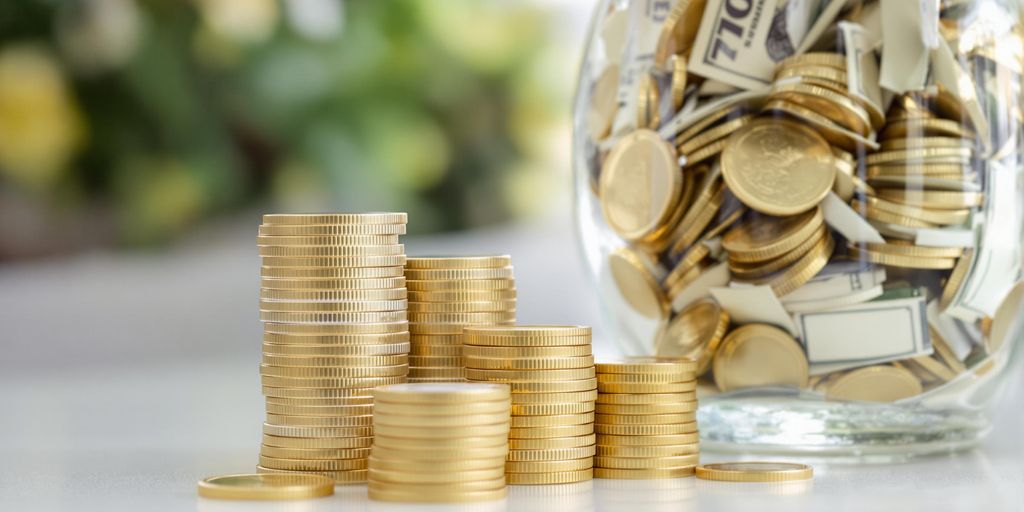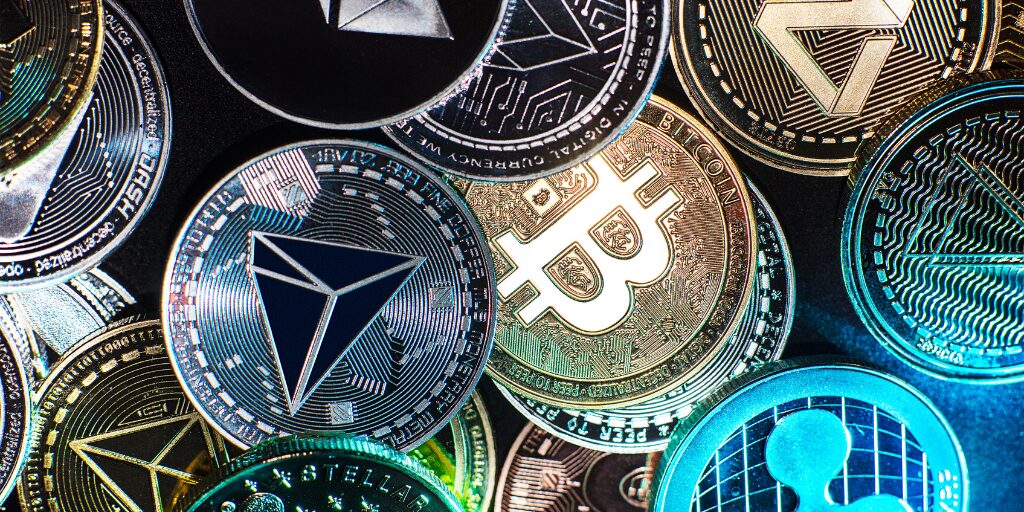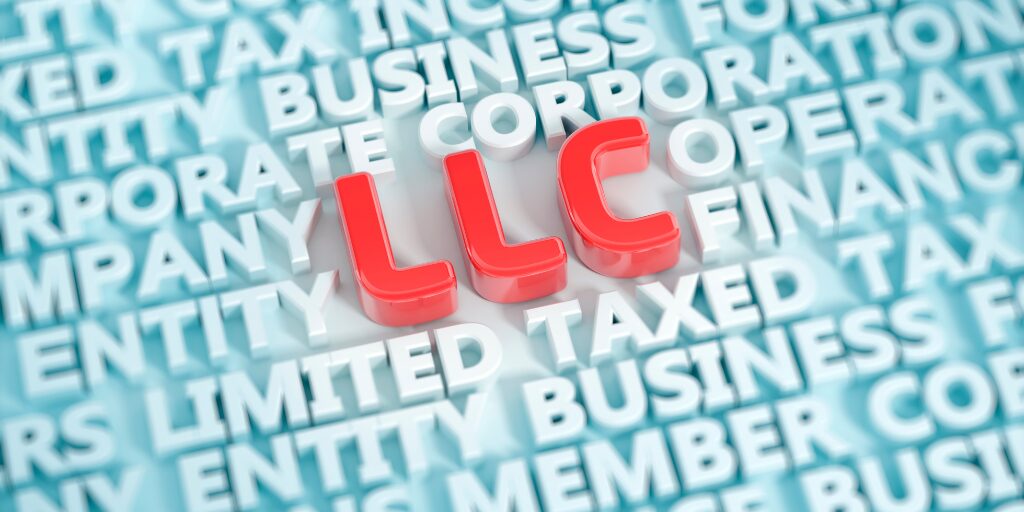In April 2025, high-yield savings accounts are still a smart choice for those looking to grow their money without taking on too much risk. With interest rates fluctuating, it’s essential to stay informed about which accounts offer the best returns. In this article, we’ll break down the current landscape of high-yield savings accounts, highlighting the best high-yield savings interest rates for April 2025 and what you should consider when choosing an account.
Key Takeaways
- BrioDirect leads with a competitive APY of 4.45%, making it the top choice this month.
- Many banks are still offering rates significantly higher than the national average of 0.59%.
- Federal Reserve policies continue to influence savings rates, keeping them relatively high despite some fluctuations.
- High-yield savings accounts provide better returns than traditional savings accounts while maintaining easy access to funds.
- Understanding fees, withdrawal limits, and customer service can help you choose the right account for your needs.
Current High-Yield Savings Rates Overview
Understanding APYs and Their Importance
Okay, so let’s talk about APYs. It stands for Annual Percentage Yield, and basically, it’s the interest rate you earn on your savings over a year, taking compounding into account. Understanding APYs is super important because it shows you the real return you’re getting on your money. It’s not just the simple interest rate; it factors in how often the interest is calculated and added to your account. The more frequently it compounds (daily vs. monthly, for example), the more you earn. So, when you’re comparing best savings account rates, make sure you’re looking at the APY, not just the stated interest rate, to get a true picture of what you’ll earn.
Comparing Rates Across Different Banks
Shopping around is key. Don’t just settle for the first high-yield savings account you see. Different banks offer different rates, and they can change pretty often depending on what’s happening in the economy. Here’s what I usually do:
- Check out a few different online banks. They often have better rates than traditional brick-and-mortar banks because they have lower overhead costs.
- Look at credit unions too. Sometimes they have good deals for members.
- Use websites that compare rates from different banks. Just make sure they’re reputable and up-to-date.
It’s also worth noting that some banks offer promotional rates that are higher for a limited time, so read the fine print. Also, keep an eye on minimum balance requirements. Sometimes, to get the best rate, you need to keep a certain amount in the account.
Trends in High-Yield Savings Rates
Things are always moving. Right now, in April 2025, we’re seeing some interesting stuff with high-yield savings rates. For a while there, rates were climbing, but recently, they’ve started to level off a bit. Some banks even lowered their annual percentage yields (APYs) slightly. This is probably because inflation has cooled down a bit, and the Federal Reserve’s actions are having an effect. It’s still a good time to have a high-yield savings account, though. Even with the slight dip, the top rates are still way better than what you’d get with a regular savings account. Plus, with the Consumer Price Index being up, these accounts are still a solid choice. Keep an eye on what the Fed does next, because that will definitely influence where rates go from here.
Top High-Yield Savings Accounts for April 2025
BrioDirect’s Leading APY
Okay, so BrioDirect is making waves this month. They’re currently offering one of the most competitive APYs out there. It’s definitely worth checking out if you’re serious about getting the most from your savings. I mean, who doesn’t want a bigger return, right?
Other Competitive Accounts
BrioDirect isn’t the only player in the game. There are a bunch of other banks with pretty good rates too. It really pays to shop around. Here’s a quick look at some others:
- UFB Direct: Consistently offers high rates, often near the top of the list.
- Popular Direct: Another solid option, known for competitive APYs and FDIC insurance.
- Marcus by Goldman Sachs: A well-known name with rates that are usually pretty decent.
Account Features to Consider
Beyond just the APY, you gotta think about what else the account offers. It’s not all about the interest rate, you know? Here’s what I usually look at:
- Minimum Balance Requirements: Some accounts need you to keep a certain amount in there to get the advertised rate. Make sure you can meet it!
- Fees: Watch out for sneaky fees that can eat into your earnings. Nobody likes those.
- Online Accessibility: Can you easily transfer money and check your balance? A good online experience is a must.
Impact of Federal Reserve Policies
How Interest Rates Affect Savings Accounts
The Federal Reserve, or Fed, really calls the shots when it comes to interest rates, and that has a direct impact on your savings account. When the Fed raises its benchmark rate, banks usually follow suit by increasing the APYs they offer. It’s like a domino effect. Conversely, when the Fed cuts rates, banks tend to lower their APYs. After a series of rate hikes in 2022 and 2023, the Fed started lowering rates in late 2024. This led to a corresponding decrease in the rates offered by many high-yield savings accounts and certificates of deposit (CDs).
Recent Federal Reserve Decisions
The Fed has been playing it cool lately, holding rates steady so far in 2025 after those cuts in late 2024. The federal funds rate is still in a range of 4.25-4.50 percent. According to recent news, Fed Chair Jerome Powell mentioned that President Trump’s increased trade tariffs could raise inflation. The Fed is waiting for more details before making any adjustments to their policy. The best high-yield savings accounts are still offering rates above 4 percent APY, which is good news because these rates are still outpacing the annual rate of inflation, which was 2.4 percent in March.
Future Projections for Savings Rates
Predicting the future is always tricky, but here’s the deal: what the Fed does next will heavily influence where savings rates go. Some experts think inflation could rise because of those tariffs, which could push the Fed to hold rates steady or even raise them. Others believe that if consumer spending drops and unemployment rises, the Fed might start cutting rates again. Neil Stanley, CEO and founder of The CorePoint, said that it’s hard to see how the Fed could lower interest rates with the current inflation and workforce data. The tariffs could increase inflation or decrease GDP, leading to “Stagflation.”
Benefits of High-Yield Savings Accounts
Higher Returns Compared to Traditional Savings
Okay, so let’s be real. Regular savings accounts at your local bank? They’re basically paying you next to nothing. I’m talking like, 0.01% APY sometimes. It’s almost insulting. High-yield savings accounts are where it’s at if you actually want to see your money grow. They offer way better interest rates, so your savings actually earn something significant. It’s like the difference between watching grass grow and watching a plant actually bloom. Here’s a quick comparison:
| Account Type | Typical APY |
|---|---|
| Traditional Savings | 0.01% – 0.05% |
| High-Yield Savings | 4.00% – 5.50% |
Liquidity and Accessibility
One of the best things about high-yield savings accounts is that your money isn’t locked away. You can get to it when you need it. It’s not like a CD where you’re penalized for early withdrawal. You can usually transfer money in and out pretty easily, which is great for emergencies or unexpected expenses. Most accounts offer these features:
- Online transfers
- Mobile banking access
- ATM access (sometimes)
Safety of Funds in High-Yield Accounts
Worried about putting your money in an online bank you’ve never heard of? Don’t be! Most high-yield savings accounts are FDIC-insured, just like your regular bank. This means that your money is protected up to $250,000 per depositor, per insured bank. So, you can sleep soundly knowing your savings are safe and sound. Here’s what FDIC insurance covers:
- Checking accounts
- Savings accounts
- Money market deposit accounts
- Certificates of deposit (CDs)
Factors Influencing Savings Rates
Economic Indicators and Their Effects
Savings rates don’t just appear out of thin air. They’re actually tied to the overall health of the economy. Things like GDP growth, employment figures, and consumer spending all play a role. For example, if the economy is booming, banks might feel confident enough to offer lower rates because they have plenty of lending opportunities. On the flip side, a slowing economy could push rates higher as banks try to attract more deposits. It’s all connected, really. Economic indicators are key to understanding rate movements.
Inflation Rates and Savings Yields
Inflation is a big one. If inflation is high, meaning the cost of goods and services is rising quickly, you’ll typically see savings yields increase as well. This is because banks need to offer rates that at least keep pace with inflation so your money doesn’t lose value over time. If your savings account is earning 2% interest, but inflation is running at 4%, you’re actually losing purchasing power. It’s a bit of a balancing act, and it’s why keeping an eye on the best savings account rates is so important.
Bank Competition and Rate Adjustments
Banks are always trying to one-up each other to attract customers. This competition can lead to some pretty sweet deals for savers. If one bank starts offering a super-high yield, others might follow suit to stay competitive. It’s like a constant game of leapfrog. Also, banks adjust their rates based on their own financial needs. If a bank needs to increase its deposits, it might offer a higher rate as an incentive. Conversely, if a bank is flush with cash, it might lower its rates. It’s all about supply and demand, and it can change pretty quickly. Here are some factors that influence how often savings rates change:
- Federal Reserve’s rate moves
- Promotional periods to attract more deposits
- Broader economic factors
Choosing the Right High-Yield Savings Account
Choosing the best high-yield savings account can feel overwhelming, but it doesn’t have to be! It’s about finding the account that fits your specific needs and financial habits. Think about what’s most important to you – is it the highest possible rate, easy access to your money, or a bank with great customer service? Let’s break down some key things to consider.
Evaluating Fees and Minimum Balances
Nobody likes fees, right? Always check for monthly maintenance fees, transfer fees, or any other hidden costs. Some accounts waive fees if you maintain a certain minimum balance, but make sure you can realistically meet that requirement. Otherwise, those fees can eat into your earnings and defeat the purpose of a high-yield account. It’s also important to know the minimum opening deposit required. Here’s a quick rundown:
- Monthly Maintenance Fees: Avoid these if possible.
- Minimum Balance Requirements: Understand the implications if you fall below the minimum.
- Transfer Fees: Check if there are fees for transferring money in or out of the account.
Understanding Withdrawal Limits
High-yield savings accounts sometimes have limits on how often you can withdraw money per month. This is due to federal regulations (Regulation D), which, while often suspended, can still influence bank policies. Exceeding these limits can result in fees or even account closure. So, if you anticipate needing frequent access to your funds, pay close attention to the withdrawal limits before you commit. Consider these points:
- Frequency of Withdrawals: How often do you plan to access your savings?
- Transaction Limits: Be aware of the number of withdrawals allowed per month.
- Potential Penalties: Know the consequences of exceeding withdrawal limits.
Customer Service and Online Banking Features
In today’s world, online banking is a must. A user-friendly website or mobile app can make managing your savings a breeze. Look for features like mobile check deposit, online transfers, and easy access to account statements. And don’t underestimate the importance of good customer service. If you ever have a question or problem, you want to be able to reach someone quickly and get helpful assistance. Check out these features:
- Online Accessibility: Is the website or app easy to use?
- Customer Support: What are the available channels (phone, email, chat)?
- User Reviews: See what other customers are saying about their experience.
Strategies for Maximizing Savings
Regular Contributions to Your Account
One of the simplest, yet most effective, ways to grow your savings is through regular contributions. It’s like planting a seed and watching it grow over time. Even small amounts, when consistently added, can make a big difference thanks to the magic of compound interest.
- Set up automatic transfers from your checking account to your high-yield savings account. This way, you don’t even have to think about it!
- Treat your savings account like a bill you have to pay each month. Prioritize it in your budget.
- Whenever you get a bonus, tax refund, or unexpected income, consider putting a portion of it into your savings account.
Utilizing Multiple Accounts for Better Rates
While it might sound like a hassle, using more than one high-yield savings account can actually be a smart move. Different banks sometimes offer promotional rates or have different tiers that reward higher balances. Spreading your money across a few accounts could potentially get you a better overall return.
- Research different banks and credit unions to find the best APYs available.
- Consider opening accounts with different features, such as no minimum balance requirements or easy access to funds.
- Keep track of all your accounts and their interest rates to ensure you’re getting the most out of your savings.
Setting Savings Goals and Tracking Progress
Having clear savings goals is like having a destination in mind when you’re driving. It gives you direction and motivation. Whether it’s a down payment on a house, a dream vacation, or a comfortable retirement, knowing what you’re saving for can help you stay on track. Tracking your progress is also important, so you can see how far you’ve come and make adjustments as needed.
- Write down your savings goals and break them down into smaller, more manageable steps.
- Use a spreadsheet or budgeting app to track your income, expenses, and savings.
- Regularly review your progress and make changes to your savings plan as needed. Life happens, and your goals might change over time.
Common Misconceptions About High-Yield Savings
Debunking Myths About Accessibility
One common worry is that high-yield savings accounts are hard to get to, but that’s usually not true. Most high-yield savings accounts offer easy online access, and many provide ATM cards or allow transfers to your regular checking account. You can usually get your money when you need it, though there might be some limits on how often you can take money out.
Understanding Rate Fluctuations
People often think that once they open a high-yield savings account, the interest rate will stay the same forever. But, the truth is that these rates can change. They usually follow what the Federal Reserve does. When the Fed raises rates, savings rates often go up too, and when the Fed cuts rates, they might go down. It’s a good idea to keep an eye on what’s happening with interest rates so you know what to expect.
Clarifying FDIC Insurance Coverage
Some folks are unsure if their money is safe in a high-yield savings account. The good news is that most of these accounts are insured by the FDIC (Federal Deposit Insurance Corporation). This means that up to $250,000 of your money is protected if the bank fails. Just make sure the bank you choose is FDIC-insured to have that peace of mind. It’s a really good idea to have a high-yield savings account to boost your savings potential.
Future of High-Yield Savings Accounts
Predictions for Interest Rates in 2025
Okay, so trying to guess where interest rates will be by the end of the year is always a bit of a gamble. A lot of it depends on what the Federal Reserve decides to do, and that, in turn, depends on how the economy is doing. Are we seeing inflation cool down? Is the job market still strong? These are the questions everyone’s watching. Most experts think we’ll see rates stabilize somewhat, but there could still be some movement depending on economic data. It’s a wait-and-see game, really.
Potential Changes in Banking Regulations
Banking regulations can have a big impact on high-yield savings accounts. If regulators decide to increase reserve requirements for banks, for example, that could put downward pressure on interest rates. Similarly, changes to FDIC insurance rules could affect how banks manage their deposit accounts. It’s not something most people think about every day, but these behind-the-scenes rules play a significant role in what kind of rates banks can offer. Here are some potential areas of change:
- Capital requirements for banks
- Rules around deposit insurance
- Regulations on online banking practices
Emerging Trends in Savings Products
The world of savings accounts is always evolving. We’re seeing more and more banks offer specialized accounts with unique features, like rewards programs or tiered interest rates based on your balance. Also, the rise of fintech companies is shaking things up, with new players offering innovative savings tools and higher rates to attract customers. It’s a good time to be a saver, with more options than ever before. Here are some trends I’ve noticed:
- Gamified savings apps that make saving fun.
- Crypto-backed savings accounts (though these come with extra risk).
- More banks offering personalized financial advice along with their savings accounts.
Final Thoughts on High-Yield Savings Accounts
In conclusion, if you’re looking to grow your savings, now’s a good time to check out high-yield savings accounts. With rates hitting up to 4.45% APY, you can earn a decent return on your money while keeping it safe and accessible. Sure, some banks have lowered their rates a bit, but overall, the competition is still strong. Remember, it’s not just about the rate; look for accounts with no fees and low minimum deposits. So, whether you’re saving for a rainy day or a big purchase, these accounts can help you reach your goals faster. Take a little time to compare your options and find the best fit for you.
Frequently Asked Questions
What is a high-yield savings account?
A high-yield savings account is a type of bank account that offers a higher interest rate compared to regular savings accounts. This means you can earn more money on your savings.
How do I find the best high-yield savings rates?
To find the best rates, you can compare offers from different banks online. Websites that track savings rates can help you see which banks provide the highest interest.
What is APY and why is it important?
APY stands for Annual Percentage Yield. It shows how much interest you will earn on your savings over a year. A higher APY means you earn more money.
Can I access my money easily in a high-yield savings account?
Yes, you can usually access your money easily, but there may be limits on how many withdrawals you can make each month.
Are high-yield savings accounts safe?
Yes, most high-yield savings accounts are insured by the FDIC, which means your money is protected up to $250,000.
What factors can affect savings account interest rates?
Interest rates can be influenced by the economy, inflation, and decisions made by the Federal Reserve.
Do high-yield savings accounts have fees?
Some high-yield savings accounts may have fees, but many do not. It’s important to read the terms and conditions to understand any potential charges.
How can I maximize my savings in a high-yield account?
To maximize your savings, try to deposit money regularly, consider using multiple accounts for better rates, and set clear savings goals.




